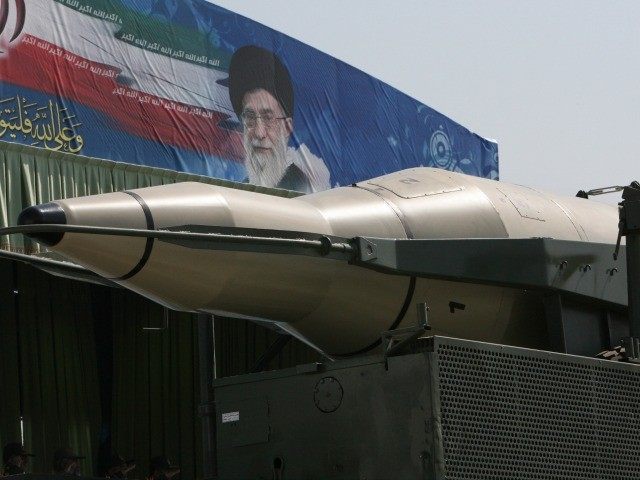A piece on the Iran nuclear deal published at the Huffington Post cites the IAEA inspection regime that is already in place as a sign of the forthcoming deal’s success, but what the IAEA really wants is the implementation of the so-called “additional protocol,” which amounts to snap inspections.
Joe Cirincione is the president of the Ploughshares Fund, an organization that seeks to reduce nuclear arms stockpiles and prevent nuclear proliferation. In his piece published today at the Huffington Post he cites three necessary elements which will allow readers to judge whether the deal being negotiated with Iran is a good one. The second of the three points is the need for tough inspections. Cirincione writes, “the deal must give us eyes on the program. It must create an inspection regime so intrusive that if Iran tries to break out, sneak out or creep out, we can detect it quickly.”
That seems reasonable. After all, what good is a deal if there is no way to verify it? Cirincione writes, “If the inspection procedures are as good as reported, we can detect cheating very quickly. I was with International Atomic Energy Agency Director General Yukiya Amano last week. He told an international gathering of non-proliferation experts that with the new inspection procedures, ‘If there is any abnormality, we can detect the change on the following day, on the very same day or in one week’s time.'”
This certainly makes it sound as if the new inspections regime is going to be tough. But in fact IAEA Director Yukiya Amano was talking about the ongoing inspection in Iran not what he expects from the forthcoming deal.
The quote in question comes from a presentation at the Carnegie Endowment last week. Director Amano made clear his organization is not part of the P5+1 talks, meaning he has no inside knowledge of the coming agreement. Later, during a Q&A session, Director Amano was asked if the IAEA could be counted on to “adequately verify” Iranian misbehavior at its enrichment facilities. Amano replied [emphasis added]:
I have no doubt that the IAEA has that capacity. Even now we send the inspectors to Iran, we do not have a permanent office but as we send inspectors, in the past we had always 2 to 4 inspectors on the ground and we have more now. Some of the facilities are visited every day, the most sensitive ones. Other facilities, less sensitive ones, are visited once a week. And that means that if there is any abnormality we can detect the change on the following day, on the very same day or in one week’s time.
In another interview last week, Director Amano confirmed that he is continuing to send inspectors to Iran under a previous agreement.
Judy Woodruff: What is the — Mr. Amano, what is the inspection situation now? I think many people don’t realize that there have been some inspections going on. What is the extent of what your agency is able to do right now, even without a new agreement?
Yukiya Amano: There is an agreement which is called a comprehensive safeguard agreement between Iran and IAEA. In light of this, in accordance with this agreement, Iran places a number of facilities under IAEA monitoring and verification. For these facilities, we can tell — we can send the inspectors. We can install camera and stills, and we can tell these activities are in peaceful purpose.
What this means is that the quote in question is not about the new deal at all. It’s about current inspections. However, while Director Amano does not have inside knowledge of what Iran may agree to, he has been clear about what he would like to see with regard to inspections. The IAEA wants Iran to finally implement something called the “additional protocol.” The additional protocol amounts to snap inspections of declared and undeclared sites within Iran. Iran agreed to these inspections, in theory, back in 2003, but they have not implemented them.
Director Amano told PBS’s Judy Woodruff last week, “the implementation of the additional protocol is essential to have the confidence in the peaceful nature of Iran nuclear activities.” During his speech at the Carnegie Endowment, Amano said this was important because “we can ask for short notice inspection and then, they don’t have time to conceal anything.”
Iran has hinted that it may implement the “additional protocol” as part of the current deal, but when Director Amano raised the issue this month Iran pointedly rebuked him. ABC News reported an Iranian nuclear spokesman said on state TV, “It would be much better if Amano only talked about the IAEA’s seasonal and monthly reports.” That’s diplo-speak for mind your own business.
The IAEA has not praised the inspections agreement of the forthcoming deal because it does not know what it will be yet. What the IAEA has called for is the implementation of snap inspections which would be an improvement over the current arrangement. While not the only important element of the deal, the inclusion of the so-called “additional protocol” will be something to look for when the new deal is announced.
The author of the Huffington Post piece says Director Amano’s response is “ambiguous” but agrees he appears to answer the question about inspections in the present tense, i.e. referring to ongoing inspections, not possible future ones.

COMMENTS
Please let us know if you're having issues with commenting.